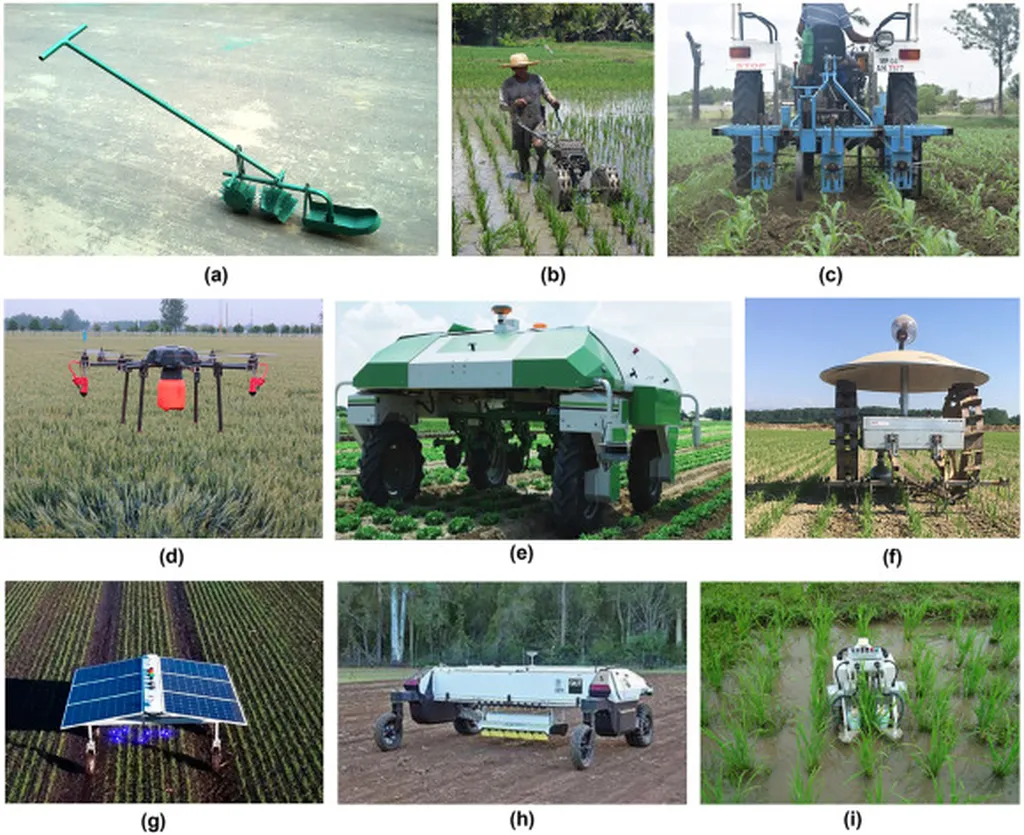In the heart of Sri Lanka, a team of researchers led by Vishwa Prasanjana from the University of Sri Jayewardenepura is tackling a persistent challenge in global agriculture: weed management in paddy fields. Their recent review, published in the *Journal of Agriculture and Food Research*, delves into the latest robotic technologies designed to combat weeds in rice cultivation, offering a glimpse into the future of sustainable farming.
Traditional methods of weed control, such as manual labor and chemical herbicides, have long been the backbone of paddy cultivation. However, these approaches come with significant drawbacks, including high labor costs, environmental degradation, and health risks to workers. The review highlights how robotic weed management systems are emerging as a promising alternative, capable of reducing reliance on chemicals and labor while enhancing precision and efficiency.
The study explores a range of robotic technologies, from mechanical and chemical weeding mechanisms to advanced laser-based systems. These robots are equipped with cutting-edge imaging systems, sensors, and artificial intelligence (AI) algorithms that enable them to detect and eliminate weeds with remarkable accuracy. For instance, platforms utilizing Variable Rate Technology (VRT) and Global Navigation Satellite System (GNSS) can precisely target weeds, minimizing chemical usage and reducing environmental impact.
“Robotic weed management has the potential to revolutionize paddy cultivation by making it more sustainable and efficient,” says Prasanjana. “However, there are still challenges to overcome, such as high initial costs and technical complexities in diverse environmental conditions.”
One of the key advancements discussed in the review is the integration of deep learning algorithms and LiDAR technology. These innovations significantly enhance weed detection accuracy, allowing robots to navigate and operate effectively in complex paddy field environments. The study also emphasizes the importance of Site-Specific Weed Management (SSWM), which tailors weeding strategies to the specific needs of different areas within a field, further optimizing resource use.
Despite these advancements, the review identifies several barriers to widespread adoption. High initial costs, limited adaptability to different weed species, and socio-cultural resistance are among the challenges that need to be addressed. Prasanjana notes, “Future research should focus on improving the adaptability of robotic systems to various weed species and environmental conditions, as well as reducing costs to make these technologies more accessible to farmers.”
The commercial implications of these findings are substantial. As the global population grows and agricultural land becomes increasingly scarce, the need for sustainable and efficient farming practices becomes ever more critical. Robotic weed management systems offer a viable solution, promising to enhance productivity while minimizing environmental impact. By reducing labor costs and chemical usage, these technologies can also improve the economic viability of paddy cultivation, benefiting both farmers and consumers.
The research conducted by Prasanjana and his team provides a comprehensive analysis of the current landscape of robotic weed management in paddy cultivation. By identifying key challenges and areas for further research, the study aims to guide future developments in this field. As the agriculture sector continues to evolve, the integration of robotic technologies holds the potential to transform paddy cultivation, making it more sustainable, efficient, and resilient in the face of global challenges.
With the findings published in the *Journal of Agriculture and Food Research*, this work not only contributes to the academic discourse but also offers practical insights for farmers, policymakers, and technology developers. As the world looks toward a future of sustainable agriculture, the innovations highlighted in this review could play a pivotal role in shaping the future of paddy cultivation.

